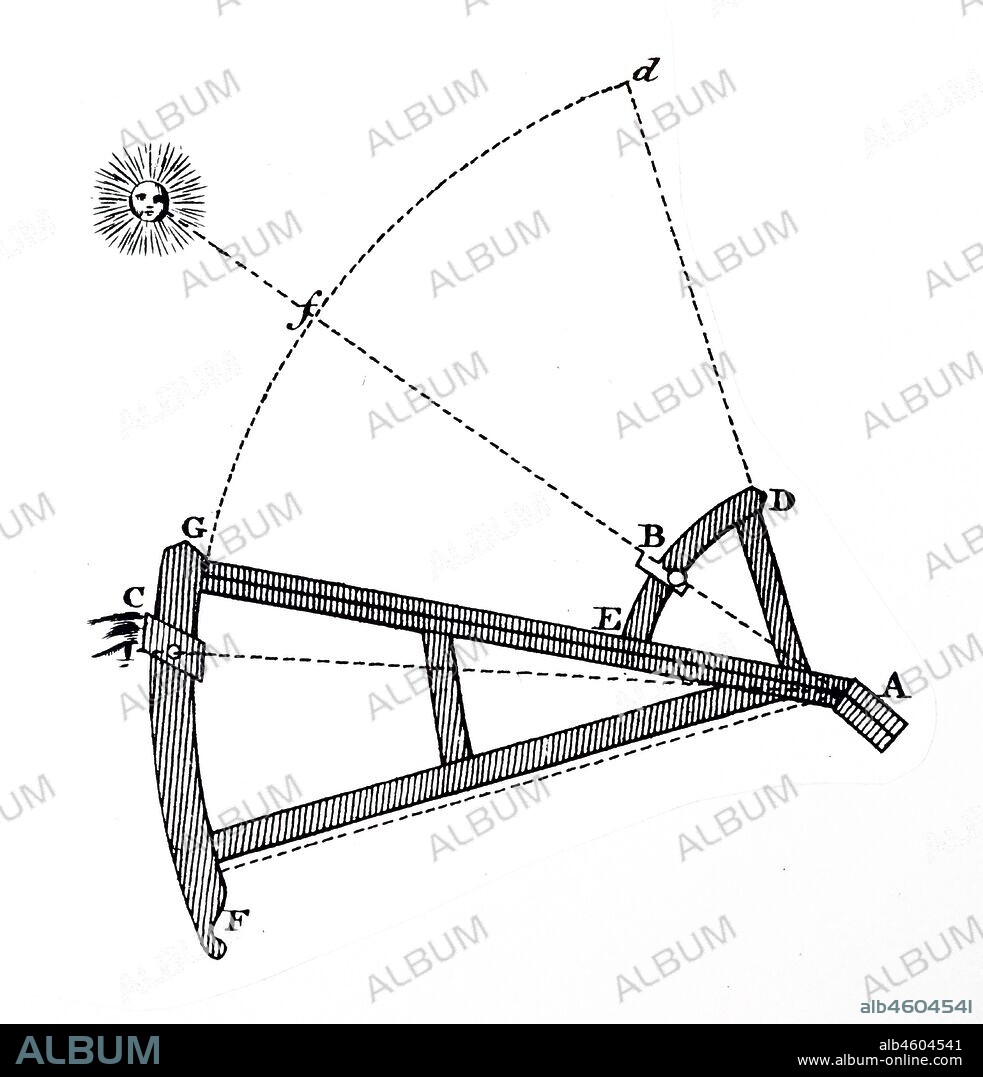alb4604541
18th century illustration showing a backstaff or English quadrant. 1776. The backstaff is a navigational instrument that was used to measure the altitude of a celestial body, in particular the sun or moon. When observing the sun, users kept the sun to their back (hence the name) and saw the shadow cast by the upper vane on a horizon vane. It was invented by the English navigator John Davis who described it in his book Seaman's Secrets in 1594

|
Add to another lightbox |
|
Add to another lightbox |



Buy this image.
Select the use:

Caption:
18th century illustration showing a backstaff or English quadrant. 1776. The backstaff is a navigational instrument that was used to measure the altitude of a celestial body, in particular the sun or moon. When observing the sun, users kept the sun to their back (hence the name) and saw the shadow cast by the upper vane on a horizon vane. It was invented by the English navigator John Davis who described it in his book Seaman's Secrets in 1594
Credit:
Album / Universal Images Group / Universal History Archive
Releases:
Model: No - Property: No
Rights questions?
Rights questions?
Image size:
4488 x 4673 px | 60.0 MB
Print size:
38.0 x 39.6 cm | 15.0 x 15.6 in (300 dpi)
Keywords:
1594 • 1776 • 18TH CENTURY • 18TH CENTURY, THE • 18TH • ALTITUDE • BACKSTAFF • BOOK • BOOKS • BRITISH • CELESTIAL BODY • ENGLISH QUADRANT • ENGLISH • HEAVENLY BODY • ILLUSTRATION • ILLUSTRATIONS • INGLES • INSTRUMENT • INSTRUMENTS • INVENTION • JOHN DAVIS • LIBRO • LIBROS • LUNA • MEASURE • MEASURES • MOON • NAVIGATION • NAVIGATOR • OBSERVING • PARTICULAR • SEAMAN • SECRETS • SHADE • SHADES • SHADOW • SOL • SUN • SUNBEAM • SUNSHINE • VANE • XVIII CENTURY
 Pinterest
Pinterest Twitter
Twitter Facebook
Facebook Copy link
Copy link Email
Email
